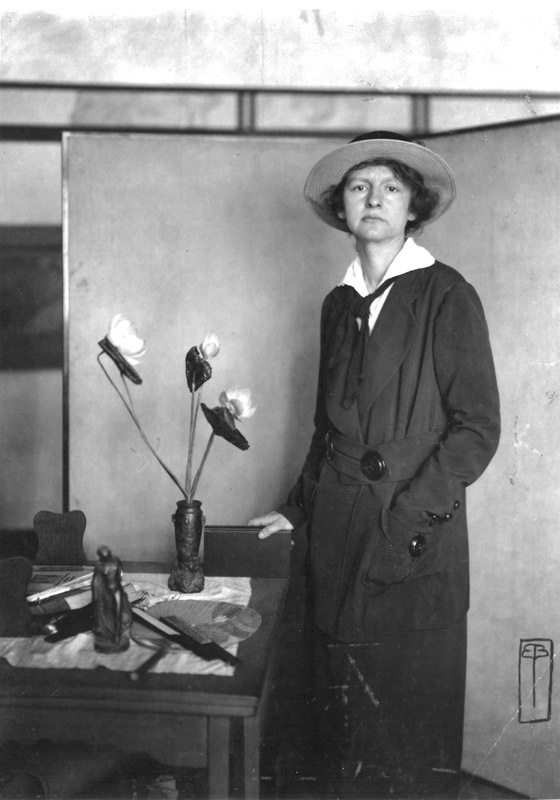I want to showcase a few World War I poems by women that usually don’t get much attention. This first one is by Alice Corbin (16 April 1881 – 18 July 1949) who despite being American (and thus not yet directly affected by the war) was moved to write, in 1917, what is a strikingly “modern” poem:
Fallen
by Alice Corbin
He was wounded and he fell in the midst of hoarse shouting.
The tide passed, and the waves came and whispered about his ankles.
Far off he heard a cock crow — children laughing,
Rising at dawn to greet the storm of petals
Shaken from apple-boughs; he heard them cry,
And turned again to find the breast of her,
And sank confusèd with a little sigh…
Thereafter water running, and a voice
That seemed to stir and flutter through the trenches
And set dead lips to talking…
Wreckage was mingled with the storm of petals…
He felt her near him, and the weight dropped off —
Suddenly…
———————————
Corbin is a fascinating figure. In 1912 she became assistant editor to Harriet Monroe at Poetry Magazine (she had already published two books of poetry by that time). Corbin left Chicago for Santa Fe, New Mexico in 1916, after having been diagnosed with tuberculosis but continued working on Poetry Magazine by long distance until 1922.
Per the Poetry Foundation:
There was no person Monroe valued more at Poetry than Alice Corbin Henderson. Monroe sought out Henderson’s help as a reader before the first issue went to press in October 1912. Henderson was responsible for discovering the work of Sherwood Anderson, Edgar Lee Masters, and Carl Sandburg—most notably Sandburg’s poem “Chicago” when he was an obscure newspaper reporter. Henderson herself was a poet whose work was shaped by her experiences in New Mexico, where she moved with her husband, the painter and architect William Penhallow Henderson, to treat her tuberculosis in 1916. She published several well-received volumes of poetry under the name Alice Corbin, and she edited an important collection of Southwest poetry, The Turquoise Trail (1928). In New Mexico Henderson befriended Willa Cather and worked for D.H. Lawrence as a part-time assistant and typist; the work of both writers appeared in Poetry magazine largely because of Henderson’s influence. From Santa Fe, Henderson continued to work actively as associate editor for six more years and wrote sharp, often witty reviews and essays for the magazine through 1922.
Liesl Olson, 100 Years of Poetry: In the Middle of Major Men (Poetry).
Other WW I women poets: Eva Dobell, Vera Brittain.
Similar posts: Edward Thomas: “6.IV.15”; and The Night Virginia Woolf Went Skinny-Dipping with a Poet.


Reblogged this on poetreecreations.org and commented:
send some poems to poetreecreations
Thank you for the introduction. You were to call this poem surprisingly modern. I’ll be looking for more of her poetry
Interesting stuff!
thanks =)
The Turquoise Trail is a beautiful book. However, it is very difficult to find.
Ray Serena, Beulah Colorado